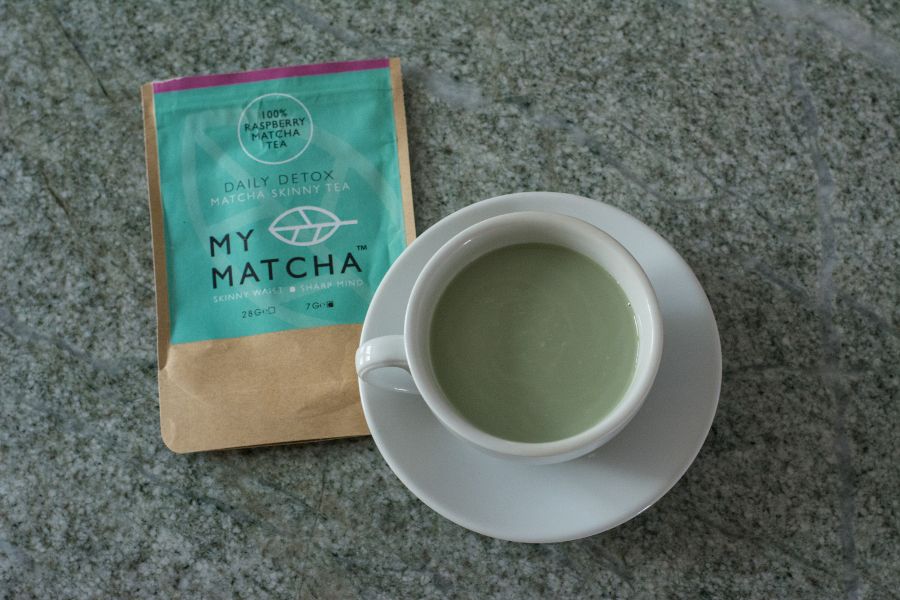Over the past few years, matcha has become a popular trend and buzzword with tea enthusiasts, those who swear by healthy and clean living, and indie coffee shop customers. But I still frequently get a look of confusion when I say I’m having matcha. Who knew a type of tea could cause such problems?
Here are all the basics you need to know about matcha green tea — as well as a simple recipe for a refreshing matcha latte to get you hooked!
What Is Matcha?
Matcha is simply green tea. The leaves are specially grown with the intent that they will become matcha and after harvesting undergo a special processing.
Most of the teas you know all come from the same plant (camellia sinensis) and simply undergo different processing. This is true for matcha as well as white tea, green tea, pu-erh tea and black tea. For matcha, the plants are given shade during the final weeks before harvesting. Once ready for processing, the stems and veins are removed, leaving only the leaves themselves. Finally, the leaves are ground until all that’s left is a fine powder in a strikingly bright green hue.
Grades
Matcha is not inexpensive. For this reason it’s important to consider the grade and the intended use of the matcha when buying it. Ceremonial grade, for tea and religious ceremonies, is considered the finest and most expensive. Premium grade is considered of good enough quality for regular drinking. The lowest and cheapest grade is culinary, which is ideal for cooking.
Tradition
Teas of all kinds have been enjoyed for hundreds of years, and matcha green tea is no different. It is the tea of choice for the traditional Japanese tea ceremony. During the carefully orchestrated event, the powder is quickly whisked with hot water to create a frothy beverage.
Matcha Health Benefits
I am no scientist or nutritionist so I can’t comment with certainty regarding any of the information circulating about matcha’s health benefits.
But there are a few facts. Because of the shading during growing, matcha has more caffeine in it than green tea. Not a lot, roughly around 10% to 15% in an average cup of green tea. By comparison, a cup of espresso has about twice as much caffeine as green tea.
The tea also contains an amino acid called L-theanine. This amino acid is supposed to help with calming and reducing stress. Similar to green tea, the tea powder is also antioxidant rich.
There are, of course, downsides as well. Most are associated with over consumption. So just like with everything else, moderation is the key.
Enjoying Today
These days matcha isn’t limited to traditional ceremonies and being enjoyed on tatami mats. The tea powder is a popular flavoring, especially in Japanese sweets. Ice cream, cakes and chocolates all feature the flavor. Kit Kat are known for their wide-ranging flavors in Japan (that are sometimes odd to Westerners). The matcha Kit Kat is quite popular (and delicious).
Matcha lattes or using the tea powder as a flavoring or supplement in protein and nutritional shakes is also quite popular.
Flavored Matcha
What’s old is new again and the green tea powder is getting a new twist. Many are looking to take advantage of the health benefits of matcha by incorporating the powdered tea into shakes and other drinks. And now matcha is available in a range of flavors if you either don’t care for the flavor of matcha or because you’re looking for variety.
MyMatcha Skinny Tea is one of these brands offering flavored matcha. I recently got a chance to try their raspberry matcha which is 100% organic matcha, raspberry powder as well as a maltodextrin. The raspberry flavor is very mild but definitely cuts some of the bitterness associated with the tea powder.
Matcha Latte Recipe
Ingredients
- 1 cup of milk of your choice whether that be low-fat, whole, almond, soy, etc.
- 3 tbsp hot water
- 1 tsp matcha green tea powder
Instructions
- In a saucepan, heat the milk until hot.
- Separately, combine the powder and water in a small bowl.
- Quickly whisk together the powder and water until fully dissolved.
- Combine the dissolved powder and the milk.
- Serve and enjoy!
Optionally, if the powder you are using doesn’t have any sweetener added, you may wish to add a small amount of sugar to your taste.
Also, while this recipe is for a hot latte, you can easily make an iced latte by chilling the warm latte and serving over ice. It’s very refreshing, especially in the summer!
MyMatcha Skinny Tea provided a sample for review. All photos, as well as all opinions, are my own.
